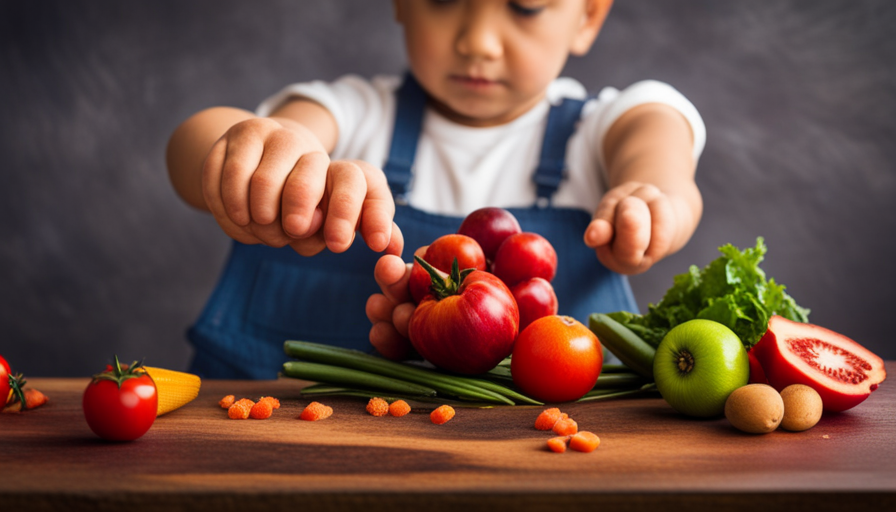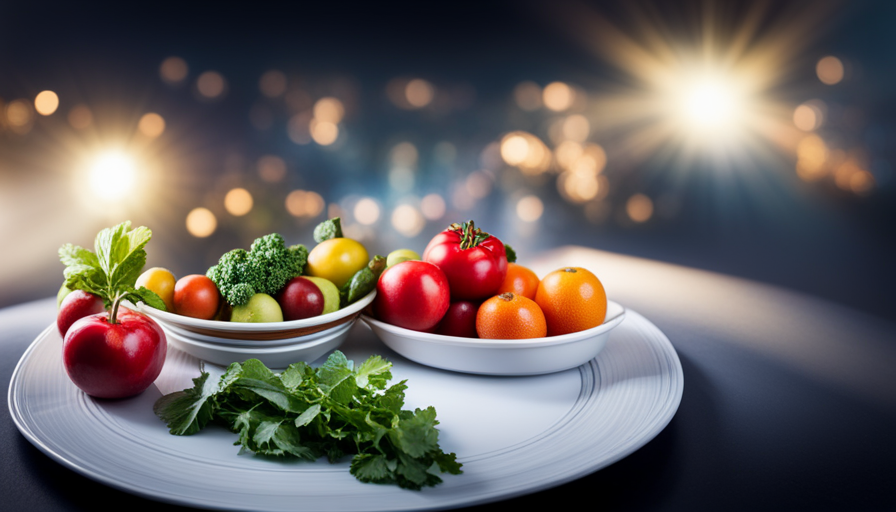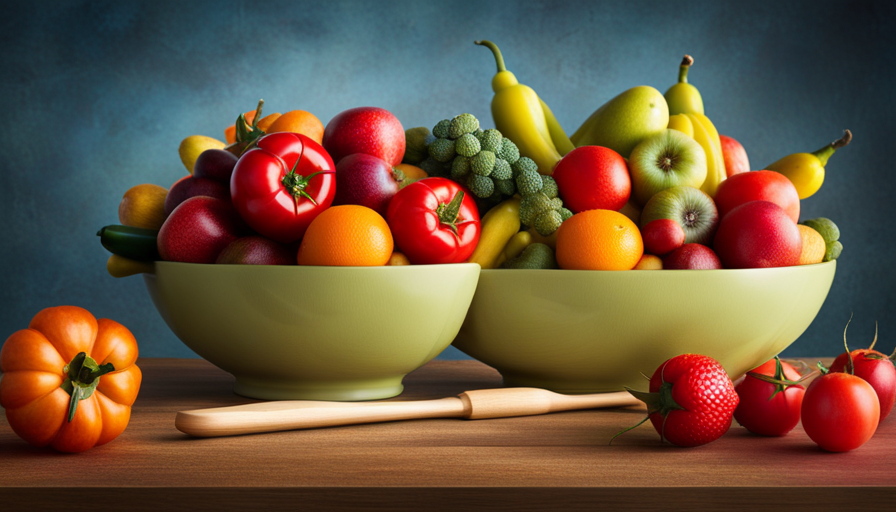Are you ready to take the plunge and send raw frozen food to someone? The choice is yours to make! Sending perishable items like raw frozen food can be tricky, but with the right guidance, you can get off to a good start.
Let’s face it, the proof of the pudding is in the eating, and you want your recipient to enjoy a delectable and safe culinary experience. That’s where this article comes in handy. We’ll show you the ropes on how to package, store, and ship raw frozen food, ensuring it arrives in pristine condition.
From selecting the appropriate shipping method to adding ice packs or dry ice for extended shipping, we’ve got you covered. So, without further ado, let’s dive right in and make sure your frozen goodies reach their destination without a hitch!
Key Takeaways
- Proper packaging is crucial for shipping raw frozen food to ensure it arrives in perfect condition.
- Choosing the appropriate shipping method, such as express or expedited shipping, minimizes transit time.
- Insulation materials like foam-lined boxes, dry ice, or gel packs help maintain the required temperature during shipping.
- Labeling the package with instructions like ‘Perishable’ and ‘Keep Frozen’ is essential, along with including contact information for communication and return in case of issues.
Understanding the Importance of Proper Packaging
Ensuring your raw frozen food arrives in perfect condition is crucial, so don’t underestimate the power of proper packaging! When it comes to shipping raw frozen food, using customized packaging solutions is essential. These specialized packaging materials are designed to keep your food frozen and prevent spoilage during transit.
To start, invest in insulated packaging. This will help maintain the temperature of your food, keeping it frozen for longer periods. Insulated boxes or coolers lined with foam or other insulating materials are ideal for this purpose. Additionally, consider using dry ice or gel packs to provide extra cooling power.
Next, securely seal your packaging to prevent any leaks or air exposure. Moisture can cause freezer burn and compromise the quality of your food. Use strong adhesive tapes and ensure all seams are tightly sealed. This will also help to maintain the temperature inside the packaging.
Label your package clearly with appropriate instructions such as ‘Perishable’ and ‘Keep Frozen.’ This will help inform the shipping personnel about the nature of the contents and the required handling instructions.
By following these packaging guidelines, you can significantly reduce the risk of spoilage and ensure that your raw frozen food arrives at its destination in perfect condition. Remember, proper packaging is the key to preserving the quality and safety of your food during the shipping process.
Choosing the Right Shipping Method
To make sure your shipment arrives safely, consider selecting the appropriate shipping method for transporting perishable items. When it comes to shipping raw frozen food, there are a few factors to consider.
First, evaluating shipping costs is crucial. Different shipping methods may vary in terms of cost, and it’s important to find a balance between affordability and reliability. Look for shipping options that offer competitive rates for frozen goods.
Second, considering international shipping regulations is essential if you’re shipping the food overseas. Each country has its own regulations and requirements for importing perishable items. Ensure that you comply with these regulations to avoid any issues or delays.
To help you choose the right shipping method, here are some key points to keep in mind:
- Opt for express or expedited shipping to minimize transit time and maintain the frozen state of the food.
- Look for shipping carriers that specialize in handling perishable items and have experience in maintaining the required temperature throughout the journey.
- Consider using dry ice or gel packs to keep the food frozen during transportation.
- Insulate the packaging with appropriate materials to provide an extra layer of protection.
- Track your shipment closely to monitor its progress and ensure timely delivery.
By carefully evaluating shipping costs and considering international shipping regulations, you can select the most suitable shipping method for your raw frozen food, ensuring it arrives at its destination in optimal condition.
Storing the Food at the Correct Temperature
Once you’ve selected the right shipping method, it’s crucial to store the perishable items at the correct temperature. This step is essential to maintaining the quality of the raw frozen food and preventing spoilage during transit.
To ensure the food remains frozen and safe to consume upon arrival, it’s important to use proper insulation and cooling methods. Start by using sturdy, insulated packaging materials such as foam coolers or dry ice containers. These will help maintain the temperature inside the package.
For raw frozen food, it’s recommended to keep it at a temperature of -18 degrees Celsius or below. To achieve this, pack the food tightly together to maximize insulation. Add enough dry ice to keep the temperature consistently low throughout the shipping process.
Remember to label the package as perishable and indicate the need for freezer storage upon arrival. This will alert the recipient to handle the package accordingly.
Lastly, it’s crucial to choose a reliable shipping carrier that can guarantee quick delivery and proper handling of the package to minimize the risk of temperature fluctuations.
By following these steps, you can ensure that your raw frozen food arrives at its destination in optimal condition, maintaining its quality and preventing spoilage.
Preparing the Food for Shipping
Don’t forget to properly prepare your perishable items before they hit the road! When shipping raw frozen food, it’s crucial to take necessary steps to prevent food spoilage and ensure food safety.
Here’s what you need to do:
-
Package the food tightly: Place the raw frozen food in airtight containers or vacuum-sealed bags to maintain its freshness and prevent any leaks or spills during transit.
-
Use proper insulation: Surround the food with ample insulation materials like dry ice, gel packs, or frozen water bottles. This’ll help maintain the required temperature and keep the food frozen throughout the shipping process.
-
Choose the right shipping method: Opt for a reliable and expedited shipping service that specializes in perishable items. Make sure they’ve experience handling frozen food and provide adequate packaging options.
-
Label the package: Clearly mark the package as ‘Perishable’ and ‘Keep Frozen’ to alert the carrier and recipient about the nature of the contents. Include the sender’s and recipient’s contact information for easy communication.
By following these steps, you can prevent food spoilage and ensure that your raw frozen food arrives safely at its destination, ready to be enjoyed.
Packaging the Frozen Food Securely
Ensure your frozen food stays secure during transit by tightly packaging it in airtight containers or vacuum-sealed bags. Surround it with proper insulation materials and choose a reliable shipping service experienced in handling perishable items.
When securely packaging your frozen food, it’s crucial to prevent any air from entering the containers or bags to maintain the food’s freshness and prevent freezer burn. Airtight containers or vacuum-sealed bags are effective in achieving this.
Additionally, use proper insulation materials such as dry ice or gel packs. These insulation materials should be placed around the food to create a barrier that minimizes temperature fluctuations.
It’s important to carefully follow the packaging instructions provided by the shipping service or consult with them directly to ensure proper handling and labeling of your frozen food. By taking these precautions and choosing a reliable shipping service, you can confidently ship your raw frozen food securely, ensuring it arrives in excellent condition.
Selecting the Appropriate Insulation Materials
Choose the right insulation materials to keep your frozen meals secure and intact throughout their journey. When selecting insulation materials for shipping raw frozen food, it’s important to consider the cost and environmental impact.
Here are three options to consider:
-
Expanded Polystyrene (EPS) foam: EPS foam is a popular choice for insulation due to its excellent insulating properties and low cost. It provides good thermal protection and is lightweight, making it ideal for shipping frozen food. However, EPS foam isn’t eco-friendly and can be difficult to recycle.
-
Vacuum-insulated panels (VIPs): VIPs are highly efficient in terms of insulation, offering superior thermal protection. They’re thin and lightweight, allowing for compact packaging and reduced shipping costs. While VIPs are more expensive compared to other options, they can provide long-term cost savings through reduced shipping expenses.
-
Natural fiber insulation: If you’re concerned about the environmental impact, natural fiber insulation is a suitable choice. Materials like wool or cotton can provide insulation while being biodegradable and renewable. However, natural fiber insulation may be more expensive and less effective than other options, requiring thicker layers for adequate thermal protection.
Consider these insulation materials carefully, taking into account both cost and environmental impact, to ensure your frozen meals arrive safely at their destination.
Adding Ice Packs or Dry Ice for Extended Shipping
To maximize the freshness and longevity of your frozen meals during shipping, you’ll want to consider adding ice packs or dry ice for extended travel. These alternative cooling methods are essential for ensuring your perishable items arrive in excellent condition.
Ice packs are commonly used as they’re easy to handle and require no special handling. Simply place them alongside your frozen food, ensuring they are well-distributed to maintain a consistent temperature. It’s important to choose ice packs that are specifically designed for shipping purposes, as they’re typically more durable and long-lasting.
Another option is dry ice, which is commonly used for shipping perishable items. Unlike regular ice packs, dry ice is extremely cold and can maintain a consistent temperature for an extended period. However, it’s crucial to handle dry ice with care as it can cause frostbite if touched directly. When using dry ice, make sure it’s properly insulated and separated from direct contact with your frozen food. Additionally, follow the best practices for shipping perishable items, such as using a sturdy insulated container and double-checking the seals to prevent any leaks.
By incorporating these alternative cooling methods and following the best practices for shipping perishable items, you can ensure that your frozen meals arrive fresh and ready to enjoy.
Labeling the Package Clearly
Clearly labeling the package is essential to guarantee that your frozen meals arrive in optimal condition. When shipping raw frozen food, it’s crucial to follow specific labeling requirements to ensure proper handling and storage.
Firstly, prominently display the words ‘Perishable’ and ‘Keep Frozen’ on the package. This notifies the shipping carrier and recipient that the contents require special handling. Additionally, include your name, address, and contact information, both inside and outside the package. This enables the carrier to contact you if necessary and ensures the package can be returned to you in case of any shipping delays or issues.
Furthermore, it’s vital to include a ‘Do Not Open’ label to prevent any tampering. This helps preserve the integrity of the frozen food and ensures that it remains uncontaminated during transit. Additionally, consider using waterproof labels or placing the labels inside a clear plastic pouch to protect them from moisture damage.
Lastly, be aware that potential shipping delays can occur. To address this, include a ‘Perishable – Handle with Care’ label to alert the carrier to prioritize the package’s delivery. Despite taking these precautions, it’s advisable to choose expedited shipping methods to minimize the chances of prolonged transit times.
By following these labeling guidelines and considering potential shipping delays, you can increase the chances of your frozen meals arriving in perfect condition.
Choosing a Reliable Shipping Carrier
When it comes to shipping your frozen meals, finding a reliable carrier is like finding a trustworthy guardian for your precious culinary creations. Evaluating shipping costs and considering international shipping options are two important factors to keep in mind when choosing the right carrier.
To help you make an informed decision, here’s a handy table that compares some popular shipping carriers:
| Carrier | Shipping Cost | International Shipping |
|---|---|---|
| UPS | Moderate | Yes |
| FedEx | High | Yes |
| USPS | Low | Limited |
| DHL | Varies | Yes |
| Amazon | Competitive | Limited |
By comparing the shipping costs and the availability of international shipping options, you can determine which carrier best suits your needs. If cost is a major concern, USPS may be the most economical option, but keep in mind that their international shipping options are limited. On the other hand, FedEx and DHL offer comprehensive international shipping services, but they come at a higher cost.
Remember, when shipping raw frozen food, it’s crucial to choose a carrier that specializes in handling perishable items and has experience in maintaining the required temperature during transit.
Tracking the Shipment for Peace of Mind
Rest assured, tracking your precious culinary creations during transit will provide you with peace of mind. Ensuring the food remains frozen during transit and dealing with potential delays in shipping are crucial considerations.
Here’s how you can track your shipment and address these concerns:
-
Choose a shipping carrier that offers real-time tracking: Look for a carrier that provides a tracking number and an online platform to monitor your package’s location and estimated delivery time. This way, you can stay updated on its progress and make necessary arrangements if any issues arise.
-
Opt for a carrier with temperature-controlled shipping: Select a carrier that specializes in shipping perishable items and offers temperature-controlled containers or packaging. This will help ensure that your frozen food remains at the required temperature throughout the journey.
-
Prepare for potential delays: Frozen food shipments can be sensitive to delays, so it’s essential to plan ahead. Pack your items with plenty of dry ice or gel packs to maintain the frozen state for an extended period. Additionally, consider selecting expedited shipping options to minimize the chances of delays.
By tracking your shipment and taking necessary precautions, you can ensure that your raw frozen food arrives safely and remains in optimal condition for your recipient.
Frequently Asked Questions
Can I ship raw frozen food internationally?
Can you use dry ice to ship raw frozen food internationally? Absolutely! Dry ice is an effective method to maintain the low temperature required for frozen food. It sublimates into carbon dioxide gas, keeping your package cold without any messy liquid residue.
When shipping raw frozen food internationally, it’s crucial to choose expedited shipping methods to minimize transit time and ensure the quality of the food. Consider using insulated containers or coolers with dry ice to preserve the freshness during transit.
How long can raw frozen food be stored before it needs to be shipped?
Raw frozen food can be stored for varying lengths of time before it needs to be shipped, depending on the type of food. Generally, it’s recommended to ship raw frozen food within 24 to 48 hours to ensure its quality and safety.
To maintain the freshness, it’s crucial to store the food at recommended storage conditions, such as below 0°F (-18°C). Additionally, packaging should be done using best practices to prevent any damage or thawing during transit.
Are there any restrictions on shipping raw frozen food to certain states or countries?
When shipping raw frozen food to Canada, there are regulations that must be followed. You may need to obtain permits and adhere to specific packaging and labeling requirements. Additionally, certain provinces may have their own regulations.
When shipping to tropical countries, there are special considerations to take into account. Extreme temperatures and longer transit times may require additional packaging materials and methods to ensure the food remains frozen and safe to consume.
Are there any specific permits or certifications required to ship raw frozen food?
To ship raw frozen food, you need to ensure you have the necessary permits and certifications. Permit requirements and the certification process vary depending on the destination and the type of food being shipped. It’s crucial to research and comply with the specific regulations of the country or state you’re shipping to.
These permits and certifications are necessary to ensure the safety and quality of the food during transportation.
How do I ensure that the frozen food stays frozen during the entire shipping process?
How can you ensure that your frozen food stays frozen during shipping?
Properly packaging the frozen food is crucial. Use high-quality insulated packaging materials, such as foam coolers or dry ice, to maintain the frozen temperature.
Securely seal the packaging to prevent any air leakage.
Additionally, choose the right shipping method that offers expedited delivery and temperature-controlled transportation.
By following these steps, you can ensure that your frozen food arrives at its destination still frozen and in perfect condition.
Can I Use the Same Shipping Method to Send Thawed Raw Food as I Would for Frozen Raw Food?
When it comes to shipping perishable items, such as thawing raw food safely, it’s crucial to choose the right shipping method. While frozen raw food can be sent using traditional methods, shipping thawed raw food requires special packaging and expedited shipping to ensure it remains safe for consumption upon arrival.
Conclusion
In conclusion, shipping raw frozen food to someone requires careful attention to packaging, temperature control, and choosing a reliable shipping carrier. Just like a well-prepared meal, the success of shipping depends on the right ingredients and proper execution.
By following the steps outlined in this article, you can ensure that your frozen food arrives safely and in excellent condition, like a perfectly plated dish that delights the senses. So, go ahead and embark on this culinary adventure, knowing that your frozen delights will reach their destination with precision and care.









